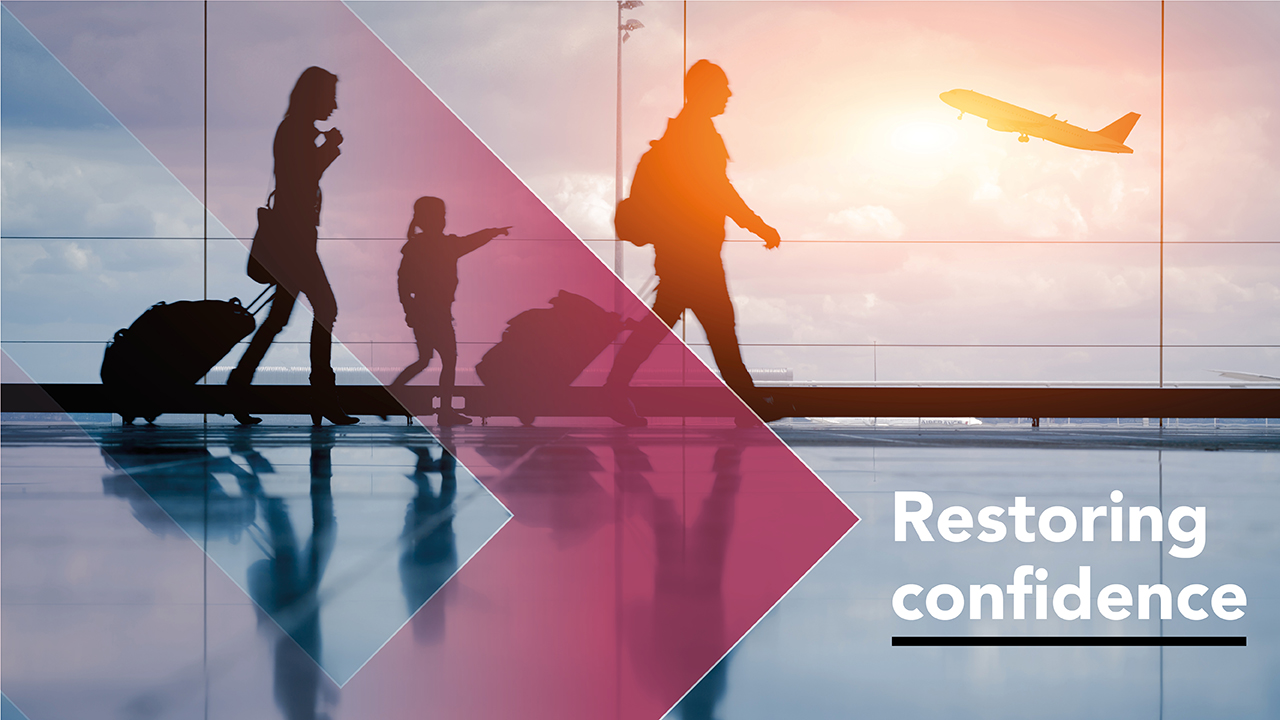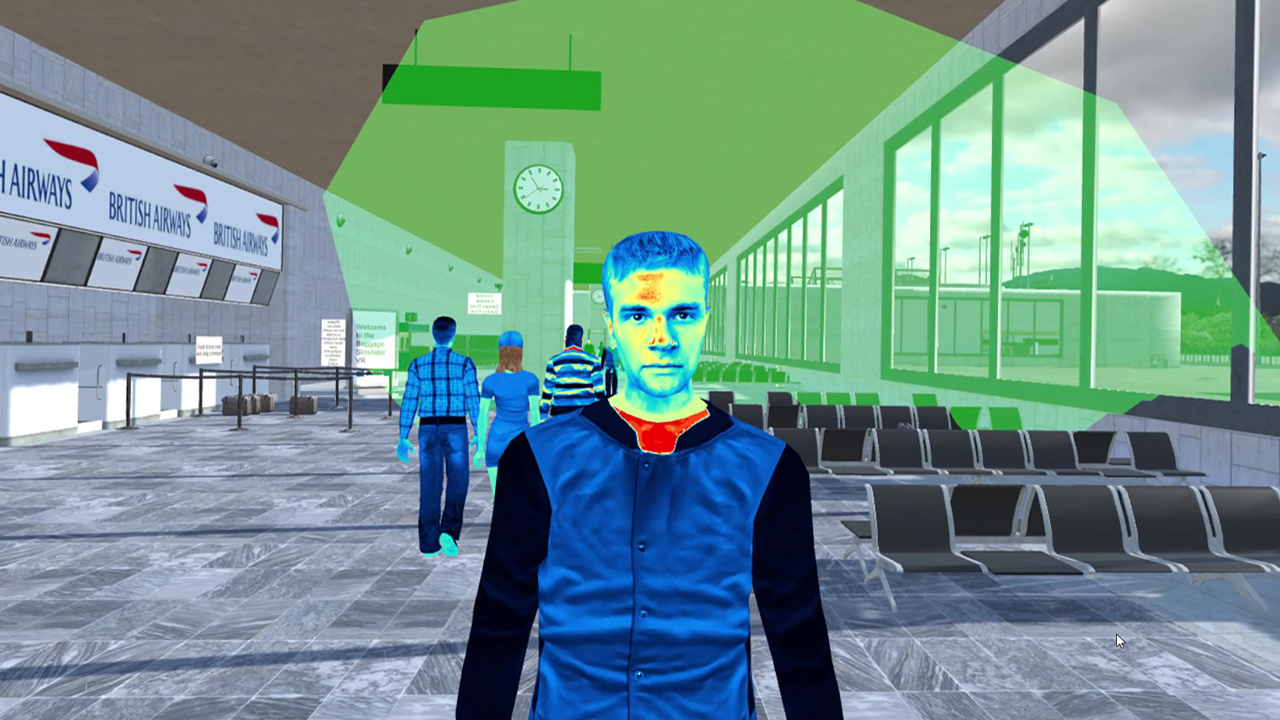Restoring confidence
Author: Airports International article with Andy Clarke
Every one of the ten busiest international airports is either trialling thermal cameras or already has them in operation.
The technology has been in operation in a range of applications for many years and became widely used at airports in Hong Kong, Singapore, Taiwan and Canada in 2003 during the Severe Acute Respiratory Syndrome (SARS) epidemic.
With COVID-19 still casting a shadow over the aviation industry, it’s clear the cameras can play a key role in minimising risk, making staff and passengers feel safe and increasing public confidence. The International Air Transport Association (IATA) believes temperature checks can act as a deterrent to travelling while unwell. In a recent IATA survey of travellers, 80% indicated that the checks make them feel safer. British Airways and Delta have carried out trials of thermal screening with their cabin crew.

How does it work?
The thermal imaging cameras work by detecting temperature through the capture of different levels of infrared light, which is invisible to the naked eye. The systems then use artificial intelligence to pick out the areas of the face that give the best indication of a person’s core body temperature.
To ensure accurate measurements, a ‘black body’ is used to provide a continuous calibration signal. It acts as a heat source that is positioned within the view of the camera, and precisely held at 35°C providing a reference. The cameras are linked to a video recording device or laptop and an additional screen, with the system wired to alarms and staff briefed on how to handle people with elevated readings.

Airports have many choices as to the type, number and location of cameras, and access to advisors who can look across the whole market.
A basic set-up does not fully embrace the potential and power of this technology, which can only be realised through a multi-layered operational strategy. The much bigger focus must be on how the cameras are integrated into broader airport and airline operations and, also, governmental systems. Deeper integration could minimise disruption to airports, airlines and their passengers, ease the flow of people through an airport and provide a highly effective layer of security against infectious diseases.
At a societal level, airlines and airports are part of government efforts to stem the tide of COVID-19 and, in future, reduce the risk of the spread of other infectious diseases. But not everyone with COVID-19 has a temperature and not everyone with a temperature has COVID-19. Therefore, a layered ‘Swiss Cheese model’, approach is required. The model likens human systems to multiple slices of swiss cheese, stacked side by side, in which risks are mitigated by different types of defences, which are ‘layered’ behind each other, just as holes in the cheese disappear as you stack more slices together. For example, thermal screening, alongside face masks, social distancing, thorough cleaning processes and other measures will combine to help minimise risk. In theory, weaknesses in one defence are mitigated by other defences in other layers. The more layers of security that are added, the less risk is presented to passengers. So while thermal imaging provides a layer of protection, it is clear it is not the entire answer and that there need to be further layers of detection and security in place.

Challenges
One of the major challenges for organisations using thermal imaging, and knitting data into an integrated system, is the inconsistency of human behaviour.
While cabin crew may be happy with the extra security provided by the cameras, a passenger who is feeling unwell and is desperate to get home may do anything to subvert the system. They could try, say, to trick cameras by washing in cold water or taking paracetamol before boarding.
There are also important considerations regarding the different way in which cabin crew, as employees, and passengers, as customers, are dealt with following an elevated temperature reading.
Once temperature data is gathered from the cameras it will need to be linked to individual passengers, to a possible secondary test, their reservations, hold baggage, seat assignments and positioning. If regulations start to require that airlines not only need to declare a generic COVID-19-free status for a flight, but also specific temperature data related to individual passengers, things will become much more complex.
Data will need to be attached to a passport or photo image. If you do this in situations where people are presenting boarding cards, how will airlines handle those people identified as having raised temperatures? Will there need to be a further test to confirm if it is safe to make a journey? This all needs very careful consideration given public attitudes to privacy, liberty and data law, both in the UK and overseas.
How will shared data be used and how can the integrity of data be maintained? Without an international standard this could be very difficult.
There is also the issue of trust between national agencies and airlines. The flow of data between corporate and national systems will become key to stemming the spread of disease, but how will shared data be used and how can its integrity be maintained? The precise point at which cameras are used, be it pre-boarding or embarkation, and the speed at which that data can be acted upon, will have to be agreed and aligned across countries.
Airports already recognise the need to reassure their staff and passengers, and accept that integrated thermal imaging systems are going to be around for the long haul. Developing an effective integration strategy now will mean better utilisation in the future.

These challenges are complex but the rewards for successful integration, such as greater safety and a more seamless passenger experience are worth attaining for the long term. It is only a matter of time before airports become contactless. Costain recently worked with Swissport on a trial of thermal camera technology for a major European airline at Birmingham Airport (BHX) and isadvising airlines and airports on thermal imaging integration. Biometric boarding, using facial recognition and iris scanning is already allowing for better security and a faster transit period. Thermal imaging cameras will almost certainly be a part of this process.

This article was first published in Airports International. SUBSCRIPTION Free to all industry professionals.

